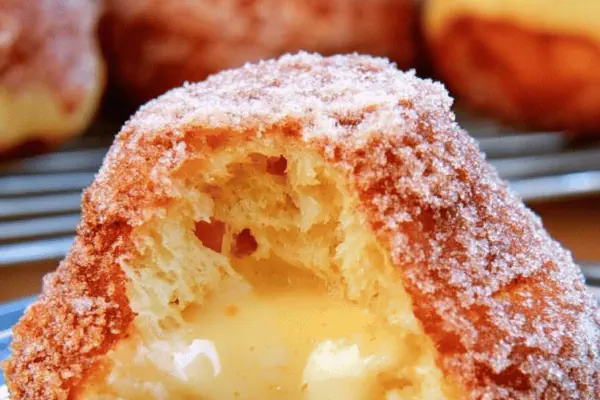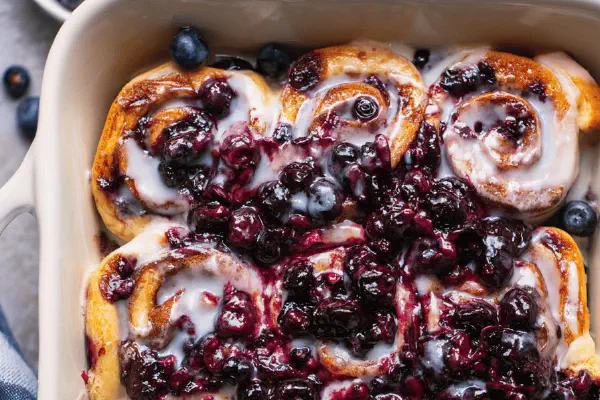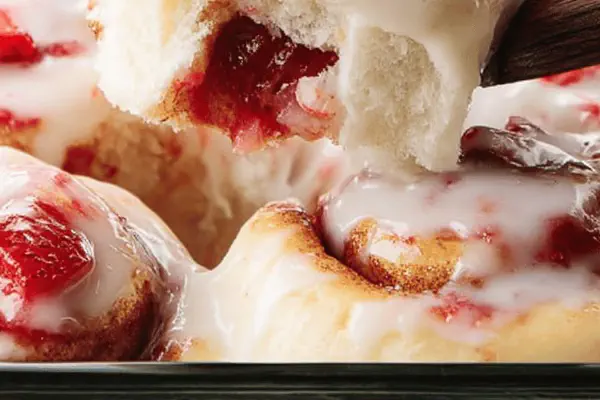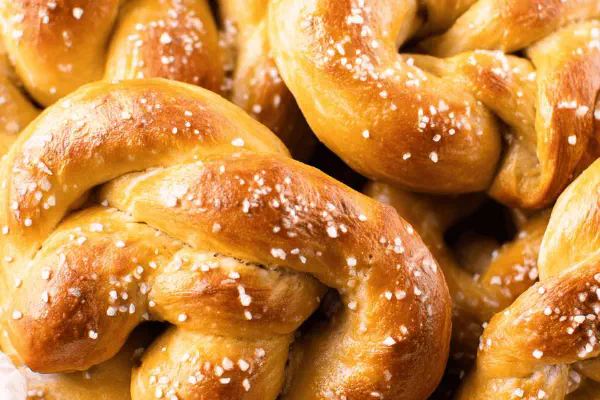Salted Caramel Doughnuts
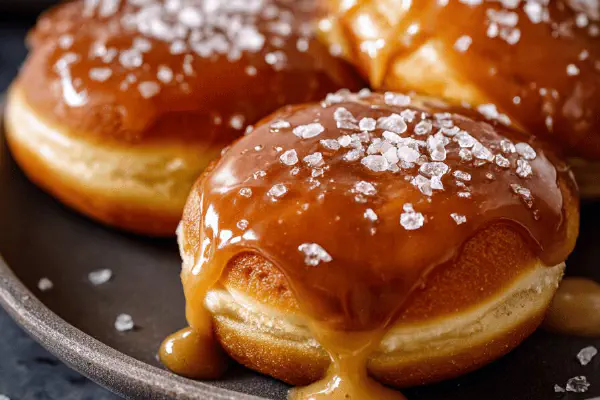
By Emma
Certified Culinary Professional
Ingredients
- 180 ml warm milk about 38 C or 100 F
- 10 ml instant yeast
- 435 g all-purpose flour sifted (about 3 cups minus 1 tablespoon)
- 60 g powdered sugar plus extra for dusting
- 28 g browned butter cooled
- 5 ml fine sea salt
- 2 large eggs room temperature
- 5 ml vanilla extract
- Canola oil or sunflower oil for frying
- Caramel Cream:
- 160 g granulated sugar
- 40 ml water
- 250 ml 35% cream
- 50 g cold unsalted butter diced
- 20 ml all-purpose flour
- 25 ml cornstarch
- 250 ml whole milk
- 2 egg yolks
- Vanilla bean seeds or paste 1 ml
- Glaze:
- 125 ml dulce de leche or caramel sauce
- Pinch of Maldon sea salt flakes
About the ingredients
Method
Dough Preparation
- Mix warm milk with instant yeast in a bowl. No stirring, just gentle swirl to wake yeast. Set aside 7 minutes max until foamy bubbles form on surface—sign of live yeast. If no bubbles, yeast’s dead; try new batch, or hold milk temp lower next time.
- In mixer bowl, combine flour, powdered sugar, salt. Switch melted butter to browned butter for that deep nuttiness first—I scorched some once, made dough taste burnt, so watch color: golden tan, nutty smell.
- Add eggs, vanilla directly to dry mix. Pour in foamy yeast-milk. Start mixing, use dough hook or wooden spoon—start slow. Dough looks shaggy, sticky. Don’t add more flour; dough will tighten soon.
- Knead by hand on floured surface or mixer on low for 6 minutes. Dough becomes elastic, satiny, slightly tacky but not sticking to fingers. Overkneading makes tough dough – stop when dough pulls away cleanly but bounces back when poked.
- Form ball, place in lightly greased bowl. Cover loosely with damp cloth. Find warm spot—not too hot or dough rises too fast, less flavor. I use oven with light on. Let rest 2 hours, doubles in size, puffy and jiggly when poked. If cold kitchen, add 30 min.
- Punch down gently; restores gluten structure. Turn onto floured board. Roll to about 1.3 cm (1/2 inch) thick. Use 7.5-cm cutter, save scraps, reroll once but avoid overhandling.
- Place formed rounds on parchment, cover loosely again, rest 18 minutes—no more, or doughnuts rise too much then collapse when frying.
Frying
- Heat oil in heavy pot or deep fryer to 175 C (350 F). Use thermometer. Too hot and outside burns, inside stays raw; too cool, dough absorbs oil and turns greasy.
- Fry 3–4 doughnuts at once, 90 seconds per side. Look for rich golden brown, bubbling quiets but doesn’t stop. Flip gently with slotted spoon or spider.
- Drain on paper towels or better, cooling rack over sheet. Cool 20 min minimum to let steam escape or dough softens too much and deflates.
- Use chopstick or skewer to poke side hole for filling. Be gentle but deep enough.
Caramel Cream
- Simmer sugar and water over medium. Don’t stir - swirl pan occasionally. Caramel goes amber then just dark golden—smell fragrant, not burnt. Remove from heat, add cream carefully, expect splatter. Stir fast with wooden spoon.
- Quickly add diced butter, stir till melted and glossy caramel forms. Cool slightly to thicken but not set.
- Separate bowl, whisk flour and cornstarch. Add egg yolks, vanilla, whisk smooth; pour in cold milk slowly, no lumps.
- Combine hot caramel with egg mixture gradually (tempering). Pour all into saucepan.
- Return to medium heat, whisk constantly. Mixture thickens, big bubbles form, gravy-like consistency. 2 min simmer after boil keeps starch cooked.
- Pour into shallow dish, cover surface with plastic wrap tight to avoid skin. Chill 90 minutes until firm but pipeable.
- Fill pastry bag fitted with 1 cm plain tip.
Filling and Glazing
- Inject cream into each doughnut. Spin tip gently inside hole to fill evenly.
- Whisk powdered sugar and dulce de leche to pourable glaze. Add salt flakes just before topping.
- Drizzle or dip doughnuts. Salt adds crunch and cuts sweetness.
- Serve immediately or refrigerate max few hours—doughnuts lose crispness fast.
Tips & Variations
- Browned butter adds earthiness; can swap with regular melted butter or coconut oil for different notes.
- If dough overly sticky, dust hands lightly but don’t add flour to dough—adjust rising time instead.
- Substitute instant yeast with active dry—proof 10 min in milk first.
- Watch frying oil temp carefully; use candy thermometer.
- Dulce de leche stores well but add salt late to keep contrast intact.
- Can fold in orange zest to dough for citrus aroma.
- Caramel cream sets too firm? Blend in 2 tbsp cream before piping.
- Leftover doughnuts revived in oven 5 min at 150 C (300 F).
Cooking tips
Chef's notes
- 💡 Use warm milk about 38 C or 100 F no hotter or yeast dies silently. Foam bubbles signal readiness; no bubbles means no rise or dense crumb. Proof in quiet bowl, no stir besides gentle swirl. Timing max 7 min foam stage; too long, yeast weakens. Proof active dry longer with same temp but slower activation.
- 💡 Brown butter swap changes flavor whole dough profile. Watch carefully—too dark burns bitterness. Nutty aroma signals right point. Melt regular butter fully before cooling, then brown in pan until golden tan and smell hits nutty. Use cooled butter; warm soaks dough loose, cold disrupts hydration. Balance in color matters most.
- 💡 Dough texture hints doneness. Sticky first, shaggy look then smooth elastic ball. Knead 6 min on low or hand. Stop when dough pulls from sides clean yet springs back lightly when poked—too long tightens gluten, tough tough. Flour add only before first mixing, none during knead unless extremely sticky due to humidity or flour quality change.
- 💡 Roll dough exactly 1.3 cm (1/2 inch) thickness to avoid greasy or uncooked center. Use cutter 7.5 cm diameter; scraps reroll once max to keep structure intact. Let rounds rest 18 min loosely covered on parchment, not longer or puff collapses during frying. Rest key to even rising and frying expand.
- 💡 Oil temp steady 175 C (350 F) vital. Too hot chars outside raw inside—watch bubbles slow without stopping noise and doughnuts rise steadily. Too cool sucks oil into dough—greasy, limp. Fry small batches 3 to 4 max; overcrowd cools oil. Use candy thermometer, check with small dough piece before frying. Drain well on rack, avoid soggy towels.
Common questions
How tell if yeast still good?
Look for foam bubbles on warm milk mix within 7 min max. No foam no rise. Use fresh yeast always. Try proof with sugar to quick test. Shelf age kills potency even if sealed.
Can I use regular butter instead browned?
Yes but flavor changes from nutty to plain. Melted butter ok but cooler before mixing. Browned butter adds earthiness. Coconut oil swap possible but dough texture varies. Keep temp careful with fractions too.
What to do if dough sticky after knead?
Dust hands lightly with flour, avoid adding flour to dough. Sticky can mean humidity or short knead. If too wet, longer rise helps gluten develop. Cold kitchen means longer rest times. Use bench flour, no more than palm dust.
How store filled doughnuts?
Eat same day best: crisp outside fades fast. Refrigerate few hours max wrapped airtight. Can reheat 5 min at 150 C oven to regain slight crispness. Avoid long refrigeration or glaze dissolves. Freeze unfilled, thaw and fill. No microwave, messes texture.
